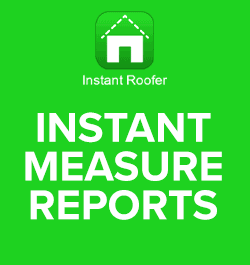UP TO THE MINUTE
Why business owners must start looking ahead
October 27, 2025 at 6:00 a.m.By Cotney Consulting Group.
If you’ve never built a financial projection before, now’s the time to start.
There’s a significant shift happening in businesses that are starting to mature financially. It starts when leadership stops obsessing over last month’s numbers and begins asking more thoughtful questions about where the company is headed next month and next year. That shift, using financial data as a forward-looking tool, changes how the whole team thinks about money. Financials aren’t just for the back office anymore. They become a living tool for operational planning, strategic decision-making and, most importantly, profit modeling.
Most business owners are comfortable managing things in real time. Creating future financial data like projections or budgets can initially feel foreign. But the truth is, the skill set isn’t new. If you’ve ever estimated a job, planned a manpower schedule or tried to figure out whether a new division or service model is worth launching, you’ve already done parts of this. Financial forecasting pulls all those moving pieces together in a structured way that allows you to see the whole picture before the year unfolds.
The process usually starts with projecting profit under several scenarios. That means working through different combinations of projected revenue, gross profit margins and overhead levels until a realistic, achievable model emerges. Once you’ve selected the most likely scenario, you formalize it into a budget, your financial roadmap for the coming year. The goal here isn’t perfection. It’s alignment. You want your team operating with a clear understanding of what it takes to achieve your company’s financial targets.
Before building projections, you need a firm grasp of three key things. First, your company’s financial capacity. This includes not just cash in the bank or your bonding limit, but how strong your balance sheet is and your relationships with key lenders and suppliers. Second, your operational capacity. What kind of work are you best at? What’s your team capable of delivering right now, and what would it take to level up? And third, market conditions. Is there enough profitable work out there in your wheelhouse? Who’s bidding? What new opportunities are surfacing, and which sectors are tightening?
Too many companies make growth decisions without fully understanding all three areas, and they get burned. The strongest companies I work with have a firm handle on their internal capacity and spend more time modeling different market conditions to stress-test their financial plan. That’s where your projections become a fundamental tool, not just a spreadsheet exercise.
The projection process is about applying your internal knowledge to external realities. You model revenue and gross margin targets across different market assumptions. I always recommend starting with three versions: optimistic, pessimistic and realistic. You’ll likely build your plan around the realistic model, but the other two are optional. Let’s say you built a conservative hiring plan into your pessimistic model. If you hit a bump mid-year, you might bake part of that into your base plan as a hedge or keep it on the shelf. Either way, you’re planning instead of reacting, which makes a difference.
Too many owners get bogged down in small-dollar distractions. They’ll spend hours looking at office supply bills while ignoring the structural levers that move their business revenue mix, pricing strategy, labor utilization and backlog risk. That’s what a fundamental financial projection forces you to focus on. Once you’ve landed on your projection, you move into budgeting. That’s where you add the expense details needed to track performance against the plan and hold your team accountable throughout the year.
If you run multiple divisions or have separate profit centers, build projections for each and roll them up. Modern accounting systems can handle this easily, allowing you to monitor performance by department, location or business line. This isn’t just about more data but more intelligent insights and better mid-course corrections when things veer off plan.
There’s another layer to all of this: short-term cash flow. Every contractor knows cash is king, but most don’t take the time to project it beyond what’s in the bank today. A short-term cash projection should cover at least three months, broken out by week. It’s your best defense against surprises, a delay in a big payment, an unexpected materials prebuy or a payroll spike on a fast-moving job.
To build one, start with your accounts receivable. When will each invoice realistically be collected? Next, layer in your payables and job-related costs, what’s coming due and when. Then, add in fixed overhead, loan payments and any known one-off cash outlays. This type of projection gives you clarity in moments when things get tight. It doesn’t just help you survive; it gives you the confidence to take on work even when cash flow timing is less than perfect.
Financial forecasting is one of the most underutilized tools in the trades. We put so much effort into accurately estimating jobs, but often fail to assess the future of our business with the same discipline. Projections, budgets and cash forecasts aren’t just for CFOs; they’re for contractors who want to run resilient, profitable companies that can weather volatility and grow.
If you’ve never built a financial projection before, now’s the time to start. You’ll make some mistakes at first, but each year gets easier. And over time, you’ll find that your ability to predict and prepare becomes a competitive advantage that most of your peers still don’t fully grasp.
Learn more about Cotney Consulting Group in their Coffee Shop Directory or visit www.cotneyconsulting.com.






















Comments
Leave a Reply
Have an account? Login to leave a comment!
Sign In